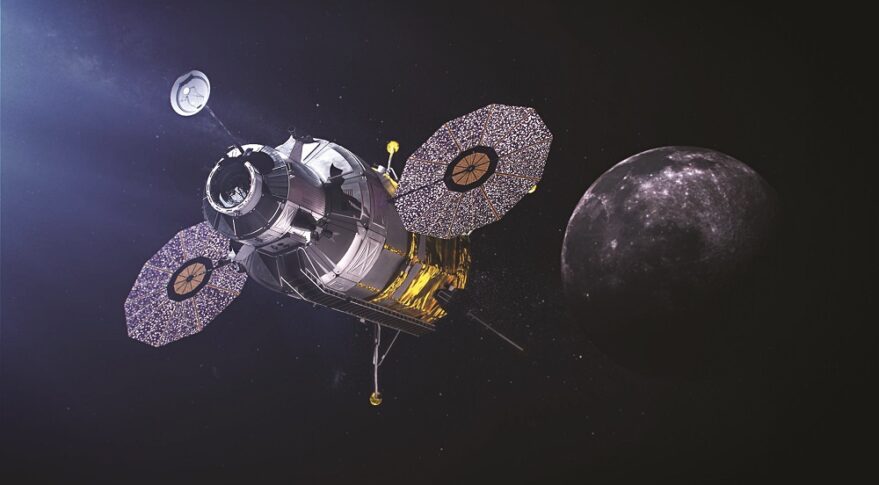NASA requests proposal for second Artemis crewed lunar lander
by Jeff Foust —

PARIS — NASA has released a request for proposals for a second human lunar lander for the Artemis program to join the Starship lander under development by SpaceX.
NASA released the call for proposals Sept. 16, nearly six months after announcing plans for the Sustaining Lunar Development (SLD) project and releasing a draft call for proposals for industry feedback. The agency set a deadline of Nov. 15 for receiving proposals with an award expected in May 2023.
The selected company would develop a lander that would support missions after Artemis 3, the first crewed landing of the Artemis campaign that will be done by SpaceX no earlier than 2025. The winning company would carry out an uncrewed landing followed by a crewed landing no earlier than the Artemis 5 mission in the late 2020s, then be eligible, along with SpaceX, to complete for lunar landing service contracts for later missions.
“Work done under this solicitation, in addition to current lander development and studies taking place, will help build the foundation for long-term deep space exploration,” Lisa Watson-Morgan, manager of the Human Landing System (HLS) program at NASA’s Marshall Space Flight Center, said in a statement about the release of the call for proposals.
In March, NASA billed Sustaining Lunar Development as fulfilling a commitment to Congress that it will have competition in the overall HLS program. “I promised competition, so here it is,” NASA Administrator Bill Nelson said at the March announcement of the project.
The winning company will have to demonstrate its lander can meet the requirements for a notional lunar lander mission called a Polar Sortie Mission. That mission would carry two astronauts to the lunar surface for a stay of up to 6.25 days and support four planned and one contingency moonwalk.
A later Polar Excursion Mission would require the lander to transport four astronauts to the lunar surface and stay there for 33 days. That mission would assume there are other assets at the landing site, like a habitat where astronauts would stay during the mission, and thus require only one roundtrip moonwalk from the lander to the habitat and back. Companies can also show how their landers could support short-stay missions to regions other than the south pole of the moon as well as be used to transport cargo.
The original HLS competition, won by SpaceX in April 2021, also included bids from teams led by Blue Origin and Dynetics. Those companies protested the award to the Government Accountability Office, which rejected the protests three months later. Blue Origin then filed suit in federal court, which ruled against the company, allowing NASA to proceed with SpaceX.
Neither Blue Origin nor Dynetics have formally announced their intent to bid on the Sustaining Lunar Development program, although Blue Origin does have an “Artemis Lander” placeholder page on its website.
It’s also unclear if Blue Origin’s partners on its “National Team” that bid on HLS, including Draper, Lockheed Martin and Northrop Grumman, will join Blue Origin again on the new competition. Officials with Lockheed and Northrop were noncommittal shortly after the announcement of the project in March, saying at the time they were studying options.
“We’re looking at SLD. Obviously, it’s an opportunity for us,” Robert Lightfoot, executive vice president of Lockheed Martin Space, said in an Aug. 28 interview before the first Artemis 1 launch attempt. He said the company had decided what companies it would work with on the proposal but wasn’t ready to disclose them.
